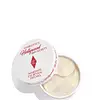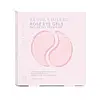What's inside
What's inside
 Key Ingredients
Key Ingredients

 Benefits
Benefits

 Concerns
Concerns

 Ingredients Side-by-side
Ingredients Side-by-side

Water
Skin ConditioningGlycerin
HumectantChondrus Crispus Powder
AbrasiveCalcium Chloride
Astringent1,2-Hexanediol
Skin ConditioningButylene Glycol
HumectantCeratonia Siliqua Gum
EmollientHydroxyacetophenone
AntioxidantPentylene Glycol
Skin ConditioningXanthan Gum
EmulsifyingPolyglyceryl-10 Laurate
Skin ConditioningPhenoxyethanol
PreservativeAllantoin
Skin ConditioningEthylhexylglycerin
Skin ConditioningSynthetic Fluorphlogopite
Sodium Phytate
Parfum
MaskingTin Oxide
AbrasiveCI 77891
Cosmetic ColorantPropanediol
SolventHydroxyethylcellulose
Emulsion StabilisingIpomoea Batatas Root Extract
Skin ConditioningColeus Forskohlii Root Extract
EmollientTrehalose
HumectantUrea
BufferingSerine
MaskingMicrococcus Lysate
Skin ConditioningAlgin
MaskingCaprylyl Glycol
EmollientDisodium Phosphate
BufferingGlyceryl Polyacrylate
Potassium Phosphate
BufferingPullulan
Sodium Hyaluronate
HumectantWater, Glycerin, Chondrus Crispus Powder, Calcium Chloride, 1,2-Hexanediol, Butylene Glycol, Ceratonia Siliqua Gum, Hydroxyacetophenone, Pentylene Glycol, Xanthan Gum, Polyglyceryl-10 Laurate, Phenoxyethanol, Allantoin, Ethylhexylglycerin, Synthetic Fluorphlogopite, Sodium Phytate, Parfum, Tin Oxide, CI 77891, Propanediol, Hydroxyethylcellulose, Ipomoea Batatas Root Extract, Coleus Forskohlii Root Extract, Trehalose, Urea, Serine, Micrococcus Lysate, Algin, Caprylyl Glycol, Disodium Phosphate, Glyceryl Polyacrylate, Potassium Phosphate, Pullulan, Sodium Hyaluronate
Water
Skin ConditioningGlycerin
HumectantDipropylene Glycol
Humectant1,2-Hexanediol
Skin ConditioningCeratonia Siliqua Gum
EmollientChondrus Crispus Powder
AbrasiveBetaine
HumectantChondrus Crispus Extract
Skin ConditioningPotassium Chloride
Sucrose
HumectantNiacinamide
SmoothingCitrus Aurantium Dulcis Fruit Extract
MaskingGardenia Florida Fruit Extract
Skin ConditioningCamellia Sinensis Leaf Extract
AntimicrobialMorus Nigra Fruit Extract
Skin ConditioningHydrolyzed Gardenia Florida Extract
AntioxidantResveratrol
AntioxidantAscorbic Acid
AntioxidantCitric Acid
BufferingCellulose Gum
Emulsion StabilisingPhenoxyethanol
PreservativeAlgin
MaskingDextrin
AbsorbentButylene Glycol
HumectantDisodium EDTA
Polysorbate 20
EmulsifyingEthylhexylglycerin
Skin ConditioningMaltodextrin
AbsorbentSodium Polyacrylate
AbsorbentAcacia Senegal Gum
MaskingPeat Water
Skin ConditioningHydroxypropyl Methylcellulose
Emulsion StabilisingPotassium Sorbate
PreservativeParfum
MaskingLimonene
PerfumingHyaluronic Acid
HumectantFragaria Ananassa Fruit Extract
Skin ConditioningWater, Glycerin, Dipropylene Glycol, 1,2-Hexanediol, Ceratonia Siliqua Gum, Chondrus Crispus Powder, Betaine, Chondrus Crispus Extract, Potassium Chloride, Sucrose, Niacinamide, Citrus Aurantium Dulcis Fruit Extract, Gardenia Florida Fruit Extract, Camellia Sinensis Leaf Extract, Morus Nigra Fruit Extract, Hydrolyzed Gardenia Florida Extract, Resveratrol, Ascorbic Acid, Citric Acid, Cellulose Gum, Phenoxyethanol, Algin, Dextrin, Butylene Glycol, Disodium EDTA, Polysorbate 20, Ethylhexylglycerin, Maltodextrin, Sodium Polyacrylate, Acacia Senegal Gum, Peat Water, Hydroxypropyl Methylcellulose, Potassium Sorbate, Parfum, Limonene, Hyaluronic Acid, Fragaria Ananassa Fruit Extract
Ingredients Explained
These ingredients are found in both products.
Ingredients higher up in an ingredient list are typically present in a larger amount.
1,2-Hexanediol is a synthetic liquid and another multi-functional powerhouse.
It is a:
- Humectant, drawing moisture into the skin
- Emollient, helping to soften skin
- Solvent, dispersing and stabilizing formulas
- Preservative booster, enhancing the antimicrobial activity of other preservatives
Algin is brown algae. Algae is an informal term for a group of aquatic organisms that can photosynthesize. It is estimated there are at least 30,000 types of Algae.
Algae contains antioxidants. Antioxidants help fight free-radicals. Free-radicals are molecules that may damage your skin cells, such as pollution.
Butylene Glycol (or BG) is used within cosmetic products for a few different reasons:
Overall, Butylene Glycol is a safe and well-rounded ingredient that works well with other ingredients.
Though this ingredient works well with most skin types, some people with sensitive skin may experience a reaction such as allergic rashes, closed comedones, or itchiness.
Learn more about Butylene GlycolCeratonia Siliqua Gum is extracted from the seeds of the carob tree. You might know this ingredient as Carob Gum or Locust Bean Gum. It is used to stabilize other ingredients and improve the texture of products.
Carob gum is made up of long-chain polysaccharides. This makes it a natural thickener.
Yes! This ingredient comes from the seeds of a tree. The name 'Locust Bean Gum' can be misleading.
Learn more about Ceratonia Siliqua GumChondrus Crispus Powder is an exfoliant.
Ethylhexylglycerin (we can't pronounce this either) is commonly used as a preservative and skin softener. It is derived from glyceryl.
You might see Ethylhexylglycerin often paired with other preservatives such as phenoxyethanol. Ethylhexylglycerin has been found to increase the effectiveness of these other preservatives.
Glycerin is already naturally found in your skin. It helps moisturize and protect your skin.
A study from 2016 found glycerin to be more effective as a humectant than AHAs and hyaluronic acid.
As a humectant, it helps the skin stay hydrated by pulling moisture to your skin. The low molecular weight of glycerin allows it to pull moisture into the deeper layers of your skin.
Hydrated skin improves your skin barrier; Your skin barrier helps protect against irritants and bacteria.
Glycerin has also been found to have antimicrobial and antiviral properties. Due to these properties, glycerin is often used in wound and burn treatments.
In cosmetics, glycerin is usually derived from plants such as soybean or palm. However, it can also be sourced from animals, such as tallow or animal fat.
This ingredient is organic, colorless, odorless, and non-toxic.
Glycerin is the name for this ingredient in American English. British English uses Glycerol/Glycerine.
Learn more about GlycerinParfum is a catch-all term for an ingredient or more that is used to give a scent to products.
Also called "fragrance", this ingredient can be a blend of hundreds of chemicals or plant oils. This means every product with "fragrance" or "parfum" in the ingredients list is a different mixture.
For instance, Habanolide is a proprietary trade name for a specific aroma chemical. When used as a fragrance ingredient in cosmetics, most aroma chemicals fall under the broad labeling category of “FRAGRANCE” or “PARFUM” according to EU and US regulations.
The term 'parfum' or 'fragrance' is not regulated in many countries. In many cases, it is up to the brand to define this term.
For instance, many brands choose to label themselves as "fragrance-free" because they are not using synthetic fragrances. However, their products may still contain ingredients such as essential oils that are considered a fragrance by INCI standards.
One example is Calendula flower extract. Calendula is an essential oil that still imparts a scent or 'fragrance'.
Depending on the blend, the ingredients in the mixture can cause allergies and sensitivities on the skin. Some ingredients that are known EU allergens include linalool and citronellol.
Parfum can also be used to mask or cover an unpleasant scent.
The bottom line is: not all fragrances/parfum/ingredients are created equally. If you are worried about fragrances, we recommend taking a closer look at an ingredient. And of course, we always recommend speaking with a professional.
Learn more about ParfumPhenoxyethanol is a preservative that has germicide, antimicrobial, and aromatic properties. Studies show that phenoxyethanol can prevent microbial growth. By itself, it has a scent that is similar to that of a rose.
It's often used in formulations along with Caprylyl Glycol to preserve the shelf life of products.
Water. It's the most common cosmetic ingredient of all. You'll usually see it at the top of ingredient lists, meaning that it makes up the largest part of the product.
So why is it so popular? Water most often acts as a solvent - this means that it helps dissolve other ingredients into the formulation.
You'll also recognize water as that liquid we all need to stay alive. If you see this, drink a glass of water. Stay hydrated!
Learn more about Water